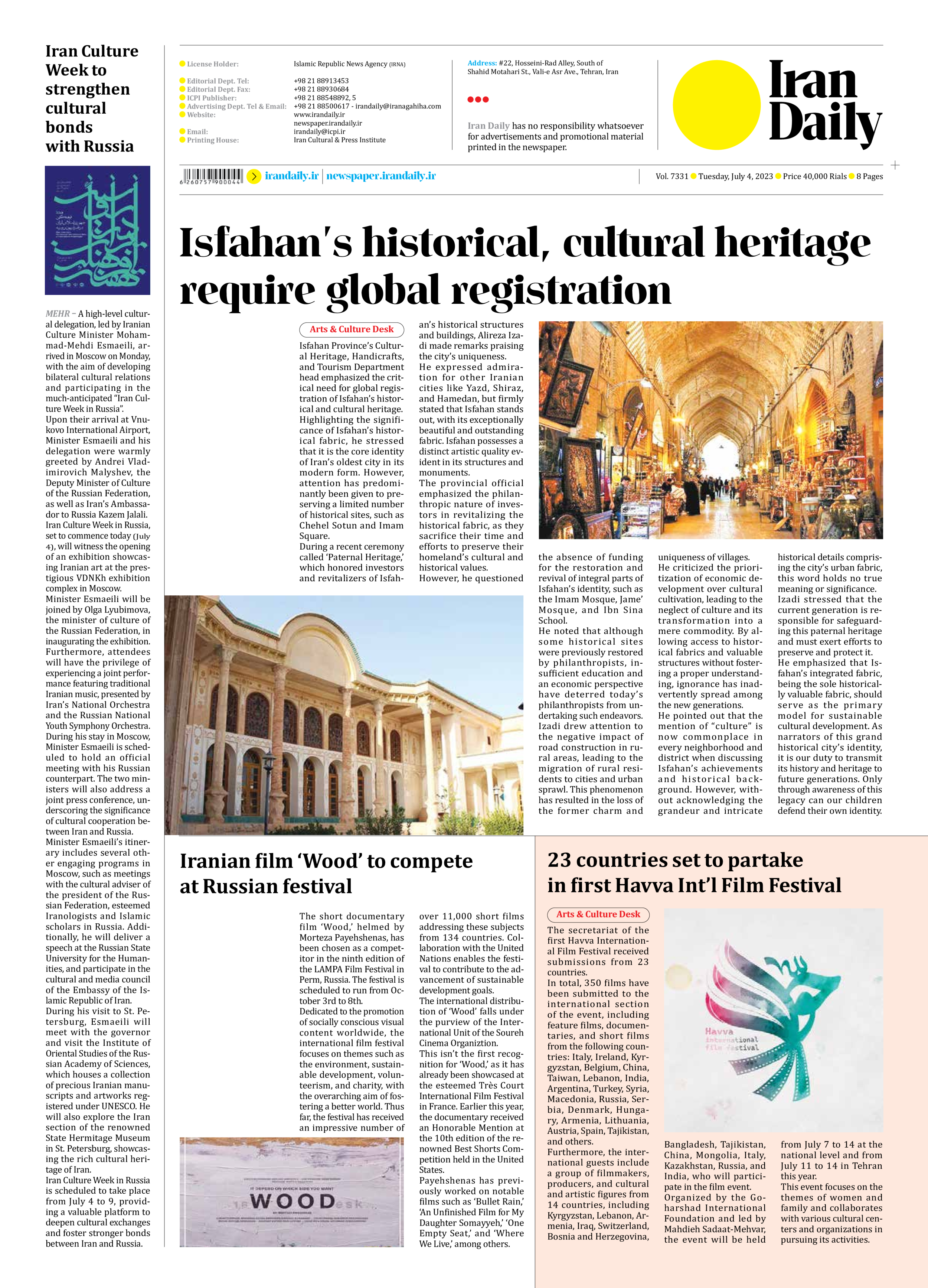
Isfahan’s historical, cultural heritage require global registration
Isfahan Province’s Cultural Heritage, Handicrafts, and Tourism Department head emphasized the critical need for global registration of Isfahan’s historical and cultural heritage.
Highlighting the significance of Isfahan’s historical fabric, he stressed that it is the core identity of Iran’s oldest city in its modern form. However, attention has predominantly been given to preserving a limited number of historical sites, such as Chehel Sotun and Imam Square.
During a recent ceremony called ‘Paternal Heritage,’ which honored investors and revitalizers of Isfahan’s historical structures and buildings, Alireza Izadi made remarks praising the city’s uniqueness.
He expressed admiration for other Iranian cities like Yazd, Shiraz, and Hamedan, but firmly stated that Isfahan stands out, with its exceptionally beautiful and outstanding fabric. Isfahan possesses a distinct artistic quality evident in its structures and monuments.
The provincial official emphasized the philanthropic nature of investors in revitalizing the historical fabric, as they sacrifice their time and efforts to preserve their homeland’s cultural and historical values.
However, he questioned the absence of funding for the restoration and revival of integral parts of Isfahan’s identity, such as the Imam Mosque, Jame’ Mosque, and Ibn Sina School.
He noted that although some historical sites were previously restored by philanthropists, insufficient education and an economic perspective have deterred today’s philanthropists from undertaking such endeavors.
Izadi drew attention to the negative impact of road construction in rural areas, leading to the migration of rural residents to cities and urban sprawl. This phenomenon has resulted in the loss of the former charm and uniqueness of villages.
He criticized the prioritization of economic development over cultural cultivation, leading to the neglect of culture and its transformation into a mere commodity. By allowing access to historical fabrics and valuable structures without fostering a proper understanding, ignorance has inadvertently spread among the new generations.
He pointed out that the mention of “culture” is now commonplace in every neighborhood and district when discussing Isfahan’s achievements and historical background. However, without acknowledging the grandeur and intricate historical details comprising the city’s urban fabric, this word holds no true meaning or significance.
Izadi stressed that the current generation is responsible for safeguarding this paternal heritage and must exert efforts to preserve and protect it.
He emphasized that Isfahan’s integrated fabric, being the sole historically valuable fabric, should serve as the primary model for sustainable cultural development. As narrators of this grand historical city’s identity, it is our duty to transmit its history and heritage to future generations. Only through awareness of this legacy can our children defend their own identity.







